Research Article - (2023) Volume 7, Issue 3
Spectroscopic Investigations of Multi -Walled Carbon Nanotubes Functionalized with L- Leucine
Milton Franklin Benial A* and
CMS Anandhi
Department of Physics, NMSSVN College, Madurai, Tamilnadu, India
*Correspondence:
Milton Franklin Benial A, Department of Physics, NMSSVN College, Madurai, Tamilnadu,
India,
Email:
Received: 02-Oct-2021, Manuscript No. IPNNR-21-10884;
Editor assigned: 05-Oct-2021, Pre QC No. IPNNR-21-10884(PQ);
Reviewed: 19-Oct-2021, QC No. IPNNR-21-10884;
Revised: 20-Sep-2023, Manuscript No. IPNNR-21-10884(R);
Published:
27-Sep-2023, DOI: 10.0. 12769/IPNNR.23.7.23
Abstract
In this study, the oxidized Multi Walled Carbon Nanotubes (MWCNTs) were functionalized with the simplest essential amino acid L-Leucine by ultra-sonication process. The structural, optical, morphological and vibrational characterizations of oxidized and L-leucine Functionalized MWCNTs (FMWCNTs) were carried out by X-Ray Diffraction (XRD), Ultraviolet-Visible Spectroscopy (UV-Vis), Scanning Electron Microscopy (SEM), Energy Dispersive X-Ray analysis (EDX), Fourier Transform Infrared (FTIR) spectroscopy Raman spectroscopy and Electron paramagnetic resonance spectroscopic techniques. The observed spectral features like peak position, intensity, diameter of the nanotubes, crystallinity, were investigated. The various spectral results confirm the successful functionalization of the L-leucine on the outer surface of the MWCNTs. The shift and the broadening of peak in the XRD pattern indicate that the incorporation of L-leucine decreases the crystalline nature. FTIR study confirms the presence of functional groups in oxidized MWCNTs and F-MWCNTs. Raman studies reveals that the functionalization rate is increased due to the higher relative intensity ratio of the FMWCNTs. EPR study revealed that the EPR absorption data found to be best fit for the Gaussian line shape. The g-value indicates that the system was found to be isotropic in nature. These spectroscopic investigations may lead to the enhancement of the biocompatibility of the f-MWCNTs, which may be useful for further chemistry with various biomolecules in the field of biomedicine and targeted drug delivery.
Keywords
Functionalization; MWCNTs; Leucine; EPR; XRD; Isotropic
Introduction
Carbon Nanotubes (CNTs), one of the interesting and versatile
research material since its discovery by lijima in 1991 [1]. The
intensive experimental and theoretical research of CNTs
opens up many new applications in chemistry, electronics,
material science and biomedicine. CNTs exist in two forms
depending upon their wall structure (i) Single Walled Carbon
Nanotubes (SWCNTs), a graphene sheet rolled up into a cylinder with a diameter of few nanometers and (ii) Multi
Walled Carbon Nanotubes (MWCNTs), an arrangement of
coaxial grapheme sheets from two to fifty numbers [2]. The
CNTs possesses unique mechanical, electronic, optical,
geometric and biological properties [3]. Due to these
extraordinary properties and their ability to obtain desired
functional groups on their outer surfaces, CNTs have potential
applications in various fields like biosensors, nano electronics,
molecular transporters, cancer therapy, diagnostics and targeted drug delivery. In recent years, CNTs have attracted
much attention in pharmacological and toxicological aspects.
The CNTs are more dynamic in their biological application
when compared to other nanomaterials. CNTs can be used
not only in imaging but also in drug delivery and thermal
ablation while Nanomaterials like quantum dots can be used
only in cancer cell imaging [4]. The high aspect ratio and the
needle like tube structure of the CNTs makes it a potential
carrier of large loads of multifunctional therapeutics,
including drugs, genes and targeting molecules along the
longitude of the tubes without affecting their cell penetrating
capability. The high surface area along with strong mechanical
properties and electrical conductivity, CNTs serve as
outstanding material for nano scaffolds and three dimensional
nano-composites [5]. Moreover, it was found that the purified
MWCNTs act as most efficient scavengers of radical
oxygenated species [6]. Purification of CNTs eliminates the
metal impurities, which are inherent in the pristine CNTs. The
oxidation process of the CNTs involve the addition of oxygen
containing groups like the carboxyl and hydroxyl functional
groups promotes the exfoliation of the CNT bundles and their
dispersibility in polar media. Oxidation process converts the
hydrophobic property of the CNTs to hydrophilic nature [7].
Functionalization of CNTs enhances the biocompatibility.
Functionalization is generally done in two ways (i) Covalent
functionalization (ii) Non-covalent functionalization [8].
Covalent functionalization is carried out by the covalent
attachment of the chemical groups on the surface of the
MWCNTs which is tightly glued to the skeleton of MWCNTs
and well matched in a wet environment. Whereas the noncovalent
type deals with the wrapping of functional molecules
in which the attachment of function groups is mainly due to
the thermal conductivity of MWCNTs. The covalent
functionalization has the advantage that the attachment of
organic moieties occurs either at the tips or the sidewalls of
the tubes which can be further utilized for post derivatization
furnishing advanced CNT based hybrid materials [9]. Amino
acids provide hydrogen bonds and electrostatic interactions
for effective lyophilisation [10]. L-Leu is used in the
biosynthesis of proteins. It is a ketogenic amino acid that can
be degraded directly into Acetyl-CoA which is the precursor of
ketone bodies. Acetyl-CoA participates in many biochemical
reactions in protein, lipid and carbohydrate metabolism. Its
main function is to deliver acetyl group to the Kreb cycle for
energy production. This current work focuses on the
functionalization of MWCNTs with an essential aliphatic
amino acid L-Leucine (Leu).
Materials and Methods
Chemicals
The analytical grade chemicals like Sulphuric acid and nitric
acid, MWCNTs with 99% purity and L-Leu with 99% purity
were purchased and used as received from Sigma Aldrich
chemical Co, St. Louis, MO, USA.
Experimental Methods
Oxidation of MWCNTs: The oxidation of MWCNTs was
performed by the previously reported procedure [11]. Pristine
MWCNTs were mixed in the ratio of 3:1 concentrated
sulphuric and nitric acid and sonicated for 3 hours at 40°C in
an ultrasonic bath to introduce carboxylic acid groups on the
surface of MWCNTs [12]. After sonication, the mixture was
added drop wise to cold distilled water and the resulting
samples, oxidized MWCNTs, were filtered and dried in vacuum
at 80°C for 4 hours.
Functionalization of MWCNTs with L-Leucine: Schematic
representation of functionalization process is given in Figure
1. Oxidized MWCNTs were functionalized with 0.1 M, 0.3 M
and 0.5 M L-Leucine as given below. Oxidized MWCNTs
powder (25 mg) was dispersed in 250 mL of double distilled
water and solicited at room temperature for one hour to
obtain homogenous solution. The L-Leucine solution was
added and sonicated for 30 min followed by 2 hrs of stirring
for MWCNTs. The MWCNTs so obtained were thoroughly
washed with double distilled water under centrifugation at
10,000 x g for 10 min and the solution phase was discarded.
This washing was repeated 5 times in order to remove
unbound L-Leucine. The obtained functionalized MWCNTs
dried in ambient atmosphere and stored in the refrigerator.
The resulting L-Leucine functionalized MWCNTs is denoted as
f-MWCNTs respectively in this manuscript [13].
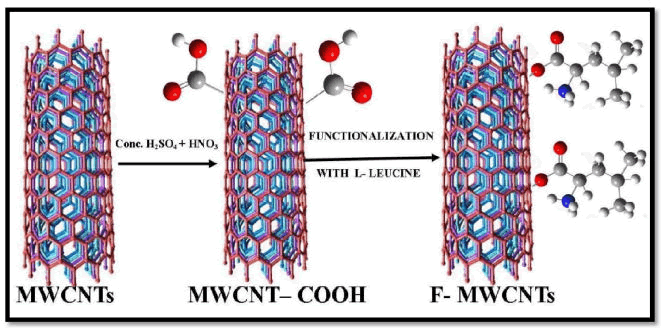
Figure 1: Schematic representation of functionalization
process.
Characterization Techniques
XRD experimental analysis was carried out using analytical
(Eindhoven, the Netherlands) diffract mewrdtyt,ter under
ambient conditions. The tube voltage was maintained as 40
KV and the tube current as 30 mA. A copper target at a
wavelength of k Cu Ka= 1.54 and tube voltage of 40 KV and
tube current of 30 mA was maintained. The average scanning
range and time for the sample was between 10°and 90°of 2
hrs. The rectangular pellets were prepared using the
compression mounding. The UV-spectra of the f-MWCNTs
were obtained using Shimadzu UV-3600 UV-Vis-NIR
spectrophotometer with a wavelength range of 200-400 nm
with ethanol as a solvent. The morphology of oxidized and f-
MWCNts were investigated using the SEM-VEGA3 TESCAN,
USA. The chemical composition of oxidized MWCNTs and f-
MWCNTs were characterized by an energy dispersive
spectrometer (Bruker, Nano, Germany). A computerized Bruker FT-IR spectrometer (Model: Vertex 70) with
wavelength range of 400 to 4000 cm-1 with the resolution of 4
cm-1 was used to obtain FT-IR transmittance spectra. The
Raman spectra were recorded from Jobin Yvon Horibra
LABRAM-HR visible (400 nm-1100 nm) micro
Raman spectrometer with the spectral resolution is of the
order 1 cm-1 with the range of 50 cm-1 to 4000 cm-1. Bruker
EMX plus spectrometer with 100 kHz field modulation
frequency and phase sensitive detection is used to record.
The EPR spectra was recorded by varying the magnetic field
in the range of 337 mT-362 mT with the field modulation
amplitude 0.6 mT; conversion time, 30 ms; radio
frequency power, 5.0 mW; receiver gain, 2000; sweep
width, 25 mT; sweep time, 30 s; number of scans, 16; 1024
k resolution; and radiofrequency, 9.86 GHz. The temperature
was controlled using a controller with water as a coolant.
Results and Discussion
Functionalization of MWCNTs with L-Leu an essential amino
acid leads to the condensation reaction between the carboxyl
acid group in the oxidized MWCNTs and the amino group
present in the L-Leu which converts the carboxylic acid into
amide resulting the attachment of L-Leu on the MWCNTs. The
amino acid functionalized MWCNTs are extensively used in
the attachment of various biomolecules like DNA and
proteins.
XRD studies
Figure 2 illustrates the XRD patterns of oxidized MWCNTs and
0.1 M, 0.3 M and 0.5 M concentrations of f-MWCNTs. The
characteristic peak for oxidized MWCNTs appears at the
position 28=25.92° and that of 0.1 M, 0.3 M and 0.5 M
concentrations of f-MWCNTs appear at 28=26.22°, 28=26.37°
and 28=26.54° respectively. The characteristic peak value
attributes to the (002) diffraction plane of the graphite
relating to the interlayer spacing of carbon atoms [14]. The
Full Wave Half Maximum (FWHM) of complete XRD spectra is
listed in Table 1. The FWHM and the crystallinity of CNTs are
always inversely proportional to each other. In this paper, the FWHM increases as the concentration of the L-Leu is
increased. This result suggests that the crystallinity decreases
due to the attachment of L-Leu on the surface of MWCNTs
[15]. The XRD analysis of the f-MWCNTs shows very little
changes when compared with the oxidized MWCNTs. Hence,
the structure of MWCNTs is not destroyed completely by the
acid treatment of the oxidation process and also by the
functionalization process [16]. The intensity of the
characteristic peak of the f-MWCNTs slightly decreases with
the increase of the L-Leu concentration. Hence, the XRD
experimental studies validate the successful attachment of
the L-Leu to the oxidized MWCNTs by functionalization.
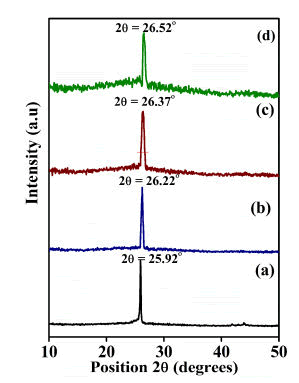
Figure 2: XRD Pattern of (a) oxidized MWCNTs, (b) 0.1 M; (c)
0.3 M; (d) of 0.5 M concentration of f- MWCNTs.
| S.N |
MWCNTs |
20* |
FWHM (degree) |
| 1 |
Oxidized MWCNTs |
25.92 |
0.166 |
| 2 |
f- MWCNTs |
0.1 M |
26.22 |
0.345 |
| 0.3 M |
26.37 |
0.400 |
| 0.5 M |
26.54 |
0.490 |
Table 1: XRD assignments of oxidized MWCNTs and 0.1, 0.3 and 0.5 M concentrations of f-MWCNTs.
Optical Properties by UV-Vis Spectral
Analysis
UV-Vis analysis is widely used to find the sample purity. The
absorption intensity is proportional to the amount of sample
dissolved in the solution. UV-Vis spectra of oxidized and f-
MWCNTs are shown in Figure 3. The characteristic peak of
oxidized MWCNTs and f-MWCNTs peaks are observed at 272
nm, 253 nm, 254 nm and 255 nm respectively. These peaks
are due to the x plasmons of free electron cloud in the
nanotube. When the nanotubes are formed by rolling the
graphene sheet, the x and o sigma orbitals are not be
orthogonal to each other since they tend to hybridize and
modify their structure. These facts are predicted by x band
model. Thus, it is evident that diameter is inversely
proportional to the curvature of the nanotube. The smaller
the diameter, the curvature is larger and larger hybridization.
The energy of the optical transition is found to be 4.56 eV,
4.87 eV, 4.88 eV and 4.90 eV respectively. From the UV- Vis
spectral data, the optical transitions of oxidized and f-
MWCNTs are mainly due to the x plasmons caused by x-x* transition since the energy region is low (0-8 eV) . The shift
obtained in the absorption peak of f-MWCNTs with respect to
oxidized MWCNTs clearly confirms the efficient
functionalization of L-Leu on the MWCNTs surface.
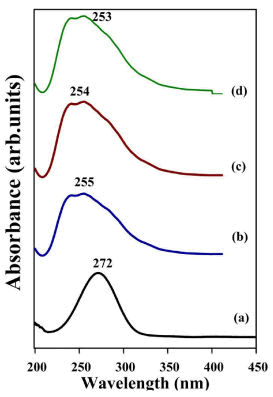
Figure 3: UV Spectra of (a) oxidized MWCNTs; (b) 0.1 M; (*)
0.3 M; (d) of 0.5 M concentration off-MWCNTs.
SEM Imaging and EDX Analysis
Figure 4 shows the SEM images of the oxidized MWCNTs and
f-MWCNTs and their corresponding histograms. SEM analysis is mainly used to characterize the surface morphology of the
MWCNTs. The SEM micrographs indicate uniform dispersion
of the f-MWCNTs. The SEM images show isolated straight
nanotube bundles of oxidized and f- MWCNTs with an average
diameter 47+1 nm for oxidized MWCNTs and 65+4 nm for f-
MWCNTs given by the corresponding histograms. The
diameters of the f-MWCNTs are increased when compared
with the oxidized MWCNTs, which represents the successful
functionalization of the L-Leucine on the MWCNTs surface.
The EDX spectra give the elemental composition of the
functional groups present in the sample. The EDX spectra of
the f-MWCNTs show the presence of nitrogen whereas the
oxidized MWCNTs do not possess the elemental nitrogen. The
presence of nitrogen atoms paves the way for the formation
of pentagons and hexagons which naturally increases the
reactivity of the neighboring carbon atoms. This confirms the
attachment of the L-Leu on the MWCNTs surface.
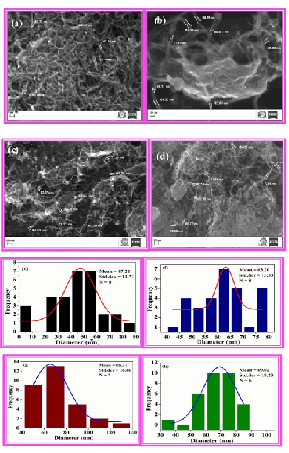
Figure 4: SEM images of (a) oxidized MWCNTs; (b) 0.1 M; (c)
0.3 M; (d) of 0.5 M concentrations of f-MWCNTs and
corresponding histograms of SEM images of; (e) oxidized
MWCNTs; (f) 0.1 M; (h) 0.3 M; (g) 0.5 M concentration of f-
MWCNTs; (h) EDX spectra off-MWCNTs.
FT-TR Spectroscopy
FT-IR spectroscopy is widely used spectroscopic technique for
the evaluation the functional groups present in the sample. Figure 5 presents the FT-IR spectra of oxidized MWCNTs and f-
MWCNTs respectively. The characteristic peak was observed
at 1582, 1584 and 1587 cm-1, which corresponds to the asymmetric vibration of Coo-. The dipolar nature of the L-Leu
is justified by the weak absorption band at 2130, 2132 and
2136 cm-1 which attributes to the NH frequencies of 3
ions. The peaks at 2846, 2854, 2858 cm-1 are attributed
to the aliphatic C-H stretch superimposed on N-H stretch.
The complete assignments of the oxidized MWCNTs
and f-MWCNTs are tabulated in Table 2 respectively. Thus,
the FT-IR spectra reveal that the L-Leu is successfully
attached to the surface of the MWCNTs.
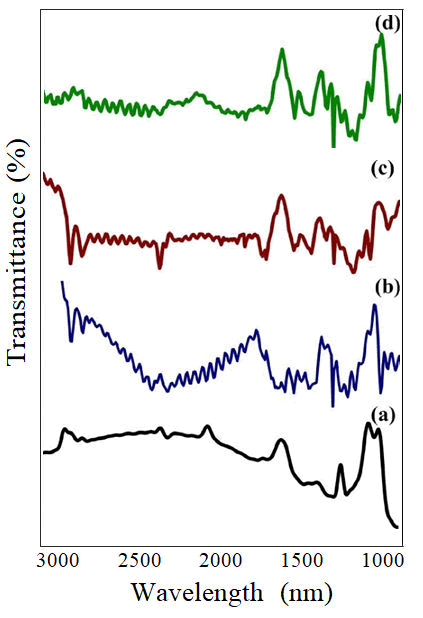
Figure 5: FTIR spectra of (a) oxidized MWCNTs; (b) 0.1 M; (c)
0.3 M; (d) of 0.5 M concentration of f-MWCNTs.
| Assignment |
Oxidized MWCNTs wavenumber (cm-1) |
Assignment |
f-MWCNTs with Leucine concentration wavenumber (cm-1) |
| 0.1 M |
0.3 M |
0.5 M |
| C=O stretching |
1747 |
Symmetric bending of CH3 |
1310 |
1311 |
1319 |
| C=OH Stretching |
1630 |
CH2 wagging motion |
1361 |
1363 |
1365 |
| C-H stretching |
2927 |
CH2 deformation motion |
1386 |
1389 |
1390 |
| O-H stretching |
3437 |
COO- stretching |
1408 |
1410 |
1412 |
| C-O Stretching |
1056 |
Symmetric deformation of NH3+ |
1514 |
1516 |
1518 |
| C-OH Stretching |
686 |
Asymmetric stretching of COO- |
1582 |
1584 |
1587 |
| |
|
Asymmetric bending of NH3+ |
1607 |
1609 |
1611 |
| Combination band of NH3+ |
2132 |
2134 |
2136 |
| 2621 |
2632 |
2641 |
| 2738 |
2742 |
2746 |
| Symmetric stretching of CH2 |
2846 |
2854 |
2858 |
| Asymmetric stretching of CH2 |
2916 |
2924 |
2946 |
| Asymmetric stretching of NH3+ |
3062 |
3064 |
3066 |
Table 2: Infrared spectral assignments of oxidized MWCNTs and 0.1, 0.3 and 0.5 concentrations of f-MWCNTs.
Raman Spectroscopic Analysis
Raman spectroscopic analysis is a typical non-destructive tool
to analyses the crystalline and amorphous carbon atoms in
the MWCNTs. It provides a quantitative assessment structural
disorder and the amorphous carbon present in the MWCNTs.
Raman spectra of the oxidized MWCNTs and the f-MWCNTs
with 0.1 M, 0.3 M and 0.5 M concentrations were shown in Figure 6 and their related Raman assignments are presented
in Table 3. The MWCNTs has a disorder or defect D band
between the region 1320 cm-1370 cm which is related to
the amount of disorder in the MWCNTs and tangential
stretching G band around the region 1530 cm-1610 cm,
which corresponds to the tangential in plane vibrations of
C-C bonds of the grapheme structure.
The second order weaker band may also occur in the range of
2662-2692 cm-1 the amount of disorder is quantitatively
analyzed by using the ratio of relative intensities (IIc).
The level of functionalization was estimated by the relative
intensity ratio. The higher the relative intensity signifies the
good extent of functionalization. In the present studies,
the relative intensity ratio increases as the
concentration of the L-Leu increases which implies that the
functionalization rate is increased by increasing the
concentration.
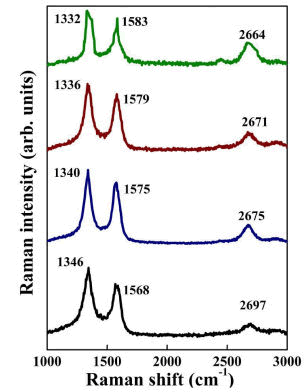
Figure 6: Raman spectra of (a) oxidized MWCNTs; (b) 0.1
M;(c) 0.3 M; (d) of 0.5 M concentration of f MWCNTs.
| MWCNTs |
Concentration |
D band (cm-1) |
G band (cm-1) |
2D band (cm-1) |
ID /Ic ratio |
| Oxidized MWCNTs |
|
1346.55 |
1568.05 |
2697.96 |
1.291 |
| L-Leu Functionalized MWCNTs |
0.1 M |
1340.56 |
1575.83 |
2675.09 |
1.307 |
| 0.3 M |
1336.58 |
1579.69 |
2671.71 |
1.315 |
| 0.5 M |
1332.61 |
1583.56 |
2664.94 |
1.325 |
Table 3: Raman spectral assignments of oxidized MWCNTs and 0.1, 0.3 and 0.5 M concentrations of f-MWCNTs.
EPR Spectroscopy
Electron paramagnetic spectroscopy is commonly employed
to study the presence of unpaired electrons in the sample.
The resonance spectra of carbon based materials such as
graphite, amorphous carbon films, fullerenes, carbon
nanoparticles and carbon nanotubes are located very close to
the free electron g factor value (g factor=2.0023). The EPR
spectra of oxidized MWCNTs and 0.1 M, 0.3 M and 0.5 M
concentration of f-MWCNTs with their corresponding
absorption spectra and Gaussian fit are given Figure 7. The gfactor
value was calculated using the magnetic field B0
obtained from the central position of EPR spectral line. The
observed EPR parameters like R2 from Gaussian fit; spin
concentration, FWHM and g-factor are tabulated in Table 4 respectively. The g-factor shows strong shift from the oxidized
MWCNTs indicates the presence of unpaired electrons, which
strongly suggests the covalent attachment of the L-Leu on the
surface of the MWCNTs. The g-factor of oxidized MWCNTs and
f-MWCNTs are 2.0115, 2.183, 2.185 and 2.186 respectively.
These g-factor values are closer to the free electron g-factor
values, which show that the system remains isotropic. The
entire system is independent of magnetic field due to the
isotropic nature. The larger shift in the g-factor is due to the
interaction of L-Leu molecules with the defect sites on the surface of the MWCNTs. The line shape of the oxidized
MWCNTs and f-MWCNTs shows Gaussian line shape, which
can be explained in terms of the FWHM the increase in the
FWHM values illustrates the line width broadening due to the
dipolar interaction.
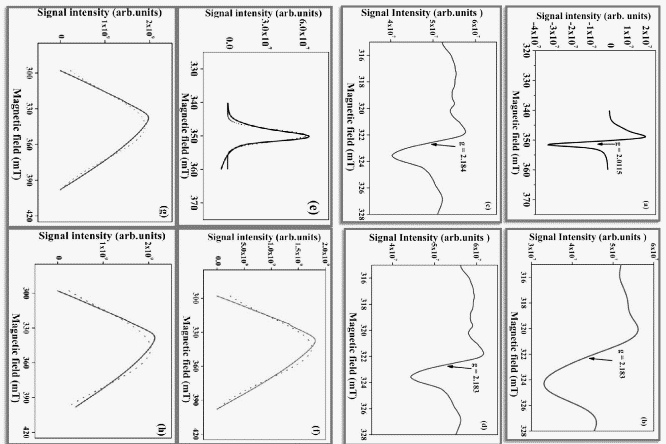
Figure 7: EPR Spectra of (a) oxidized MWCNTs; (b) 0.1 M; (c)
0.3 M; (d) of 0.5 M concentration of f-MWCNTs and
corresponding absorption spectra of (e) oxidized MWCNTs; (f)
0.1 M; (g) 0.3 M; (h)0.5 M concentration of F-MWCNTs and
their Gaussian fit.
| MWCNTs |
Concentration |
R2 from Gaussian fit |
Spin concentration A from Gaussian fit (au) |
FWHM (mT) |
g-factor |
| Oxidized MWCNTs |
|
0.97034 |
2.759 x 108 |
3.92 |
2.0115 |
| f-MWCNTs |
0.1 M |
0.97481 |
1.427 x 1011 |
34.71 |
2.183 |
| 0.3 M |
0.97595 |
1.610 x 1011 |
65.77 |
2.185 |
| 0.5 M |
0.97751 |
2.439 x 1011 |
66.78 |
2.186 |
Table 4: EPR parameters of oxidized MWCNTs and 0.1, 0.3 and 0.5 M concentrations of f- MWCNTs.
Conclusion
The structural, optical, vibrational, morphological and
magnetic investigations of oxidized and f-MWCNTs were
carried out. The UV-Vis spectral data shows the optical
transitions of oxidized and f-MWCNTs are mainly due to the x
plasmons caused by x-x* transition. The surface morphology
was analyzed by the SEM micrographs which indicate the
uniform dispersion of the f-MWCNTs. The EDX of the f-
MWCNTs shows the presence of nitrogen whereas the
oxidized MWCNTs do not possess the elemental nitrogen in
the EDX analysis. FTIR study confirms the presence of
functional groups in oxidized MWCNTs and f-MWCNTs. Raman
studies reveals that the functionalization rate is increased due
to the higher relative intensity ratio of the f-MWCNTs. EPR
study revealed that the EPR absorption data found to be best
fit for the Gaussian line shape. The g-value indicates that the
system was found to be isotropic in nature. These
spectroscopic investigations may lead to the enhancement of
the biocompatibility of the f-MWCNTs, which may be useful for further chemistry with various biomolecules in the field of
biomedicine and targeted drug delivery.
Acknowledgement
The authors thank the management for their encouragement
to carry out this work. Financial support from UGC (University
Grants Commission) under the scheme of Rajiv Gandhi
national fellowship 2016-2017 (Award letter
no. F117.1/2016-17/RGNF-2015-17-SC-TAM-27556/(SA-III/
Website), Dated 08-January-2016) is highly acknowledged.
References
- Iijima S (1991) Helical microtubules of graphitic carbon. Nature. 31:354-356.
[Google Scholar][Indexed]
- Iijima S, Ichihashi T (1993) Single shell carbon nanotubes of 1 nm diameter. Nature. 363:603.
[Google Scholar][Indexed]
- Branch C, Frusteri F, Magazu V, Mangione V (2004) Characterization of carbon nanotubes by TEM and infrared spectroscopy. J Phys Chem B. 108:3469-3473.
[Crossref][Google Scholar][Indexed]
- Madani SY, Naderi N, Aaron Tan OD, Seifalian AM (2011) A new era of cancer treatment: carbon nanotubes as drug delivery tools. Int J Nanomed. 6:2963-2979.
[Crossref][Google Scholar][Indexed]
- Sadeh H, Shahryari-ghoshekandi R. Functionalization of carbon nanotubes and its application in nanomedicine: A review. Nanomed J. 2:231-248.
[Google Scholar][Indexed]
- Fenoglio I, Tomatis M, Lison DJ, Muller A 2006 Reactivity of carbon nanotubes: Free radical generation or scavenging activity? Biol Med. 40:1227.
[Crossref][Google Scholar][Indexed]
- Fayazfar H, Afshar A, Dolati A, Dolati M (2013) DNA impedance biosensor for detection of cancer, TP53 gene mutation, based on gold nanoparticles/aligned carbon nanotubes modified electrode. Sci Appl. 4:667-678.
[Crossref][Google Scholar][Indexed]
- Singh P, Campidelli S, Giordani S, Bonifazi D, Bianco A, et al. (2009) Organic functionalisation and characterization of single walled carbon nanotubes. Chem Soc Rev. 38: 2214-2230.
[Crossref] [Google Scholar]
- Chronopoulos DD, Kokotos CG, Karousis N, Kokotos G, Tagmatarchis N, et al. (2015) Functionalized multi walled carbon nanotubes in an aldol reaction. Nanoscale. 7:2750-2757.
[Crossref] [Google Scholar]
- Mohammed AR, Coombes AGA, Perrie Y (2007) Amino acids as cryoprotectants for liposomal delivery systems. Eur J Pharm Sci. 30: 406-413.
[Crossref] [Google Scholar]
- Anandhi CMS, Benial AMF (2019) Bio functionalization of multi-walled carbon nanotubes with L-Alanine. Mater Res Express. 6: 115625.
[Google Scholar]
- Ramanathan T, Fisher FT, Ruoff RS, Brinson LC (2005) Amino functionalized carbon nanotubes for binding to polymers and biological systems. Chem Mater. 17: 1290-1295.
[Crossref] [Google Scholar]
- Rance GA, Marsh DH, Nicholas RJ, Khlobystov AN (2010) UV-vis absorption spectroscopy of carbon nanotubes: Relationship between the π-electron plasmon and nanotube diameter. Chem Phys Lett. 493:19-23.
[Crossref][Google Scholar][Indexed]
- Guo GY, Chu KC, Ding-sheng W, Chun-gang D (2004) Linear and nonlinear optical properties of carbon nanotubes from first principles calculations. Phys Rev. 69:205416.
[Google Scholar][Indexed]
- He RR, Jin HZ, Zhu J, Yan YJ, Chen XH (1998) Physical and electronic structure in carbon nanotubes. Che Phys Lett. 298:170-176.
[Crossref][Google Scholar][Indexed]
- Wang CH, Dub HY, Sai YTT, Chenc CP, Huang CJ, et al. (2007) High performance of low electro catalysts loading on CNT directly grown on carbon cloth for DMFC. J Power Sources. 171:55-62.
[Crossref][Google Scholar][Indexed]
Citation: Benial MFA, Anandhi CMS (2022) Spectroscopic Investigations of Multi Walled Carbon Nanotubes Functionalized with L-Leucine. J Nanosci Nanotechnol Res. 6:45.
Copyright: © 2022 Benial MFA, et al. This is an open-access article distributed under the terms of the Creative Commons Attribution License, which permits unrestricted use, distribution, and reproduction in any medium, provided the original author and source are credited.








